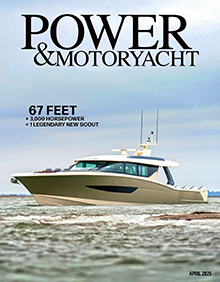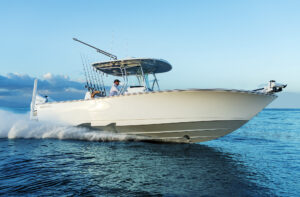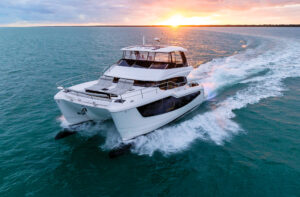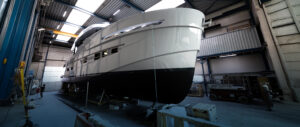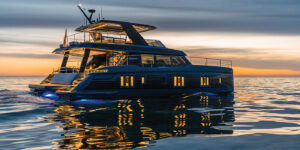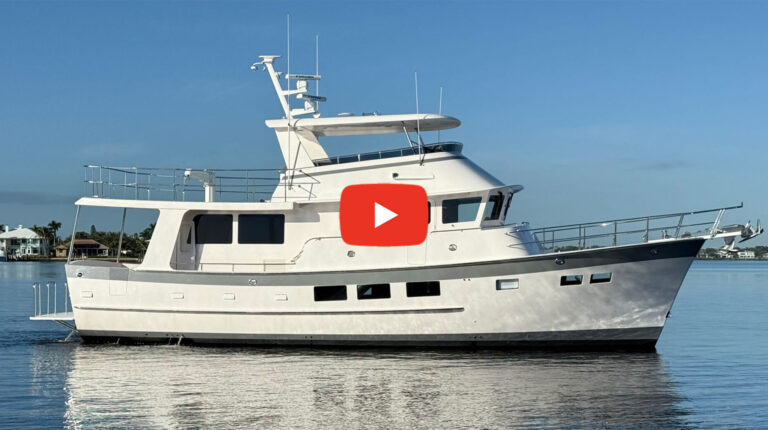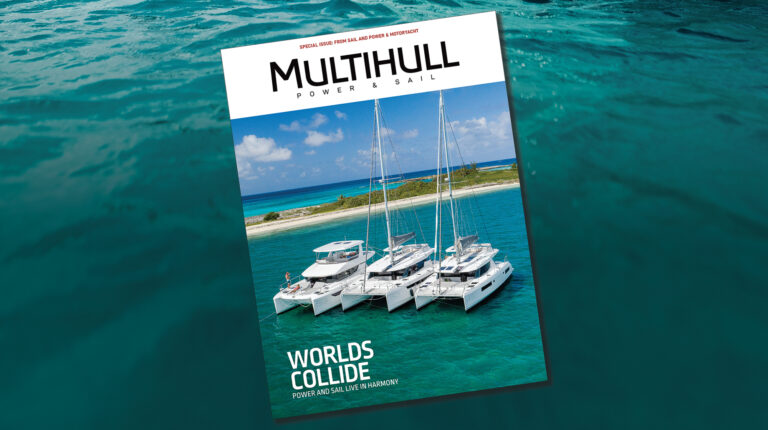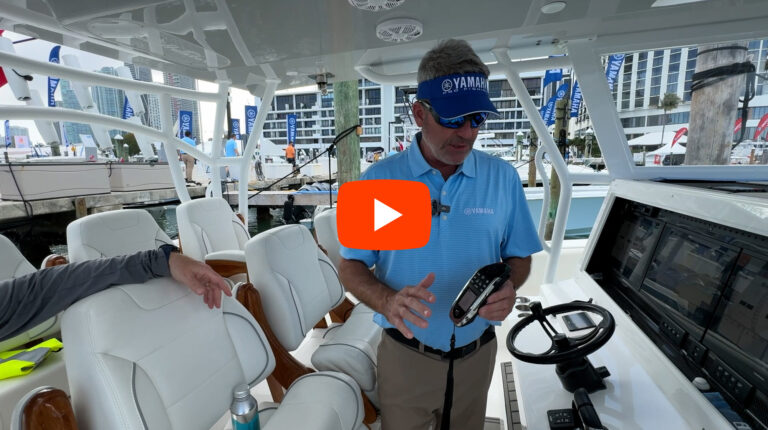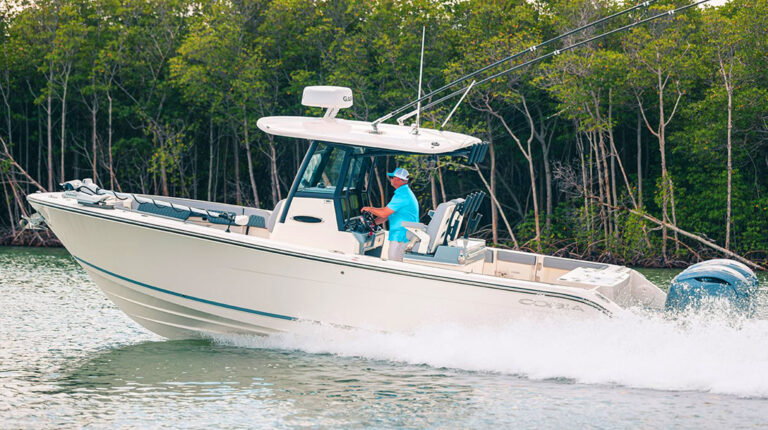Afloat In Finland
Finding a recommended cruising ground after 30-plus years was rewarding, and so was running the boats made there.

The Turku Archipelago. Or as the locals simply call it, The Archipelago. Offhand, that’s not a destination most U.S. boaters would know. But if you’re thinking about boating and exploring in Scandinavian waters, it’s a must-see. Or so I was told by the broadcaster considered “the most trusted man in America.”
It was 1984, and I was the newly minted editor of Waterway Guide, then located in Annapolis, Maryland, and owned by Manhattan-based Whitney Communications. Walter Cronkite served on the board of that corporation, and being a highly experienced cruising yachtsman who transited the East Coast every year, took a special interest in our series of coastal cruising guides. My assignment was simple: Have lunch with the most famous newsman of our day and convince him to write an introduction for our new series of guidebooks.
Sitting across the table from him at McGarvey’s Saloon & Oyster Bar, one of the best-known waterfront bars in Annapolis, I was more than a little in awe, and apprehensive to boot. But Cronkite put me at ease right away, talking about boats we both admired and cruising destinations we had each explored. When I told him of my fondness for the Maine coast, also a favorite of his, he compared it to the Turku Archipelago on the southwest coast of Finland.

I stopped eating and listened carefully. He described a cruising yachtsman’s dream—over 3,000 square miles of pristine salt water that edged brackish at times, and from 25,000 to 50,000 boulder-strewn islands of all sizes (including a boatload of semi-submerged rocks), flanked by Sweden to the west, the Baltic Sea to the south and the Gulf of Bothnia to the north. As Cronkite described the beauty and the sometimes-treacherous navigation of this archipelago’s glacial-formed waters, that tiny voice in the back of my head clearly said: Get thee to The Archipelago.
Fast forward to June 2018. As I stepped off the touring coach in Nauvo, a small town roughly three hours west of Helsinki, deep within the southern sector of The Archipelago, I thought: Well, better late than never. And as I looked toward the water, out past the town marina to a distant island notable for its low, dense forest greens and salt-and-pepper granite grays, edged with water lit golden by the afternoon sun, I also thought: Many thanks, Mr. Cronkite.
Disembarking with me were 47 marine journalists from 22 countries, all gathered and hosted by Finnboat, the Finnish Marine Industries Federation. This gathering was the 25th Floating Boat Show, and I was the only American journalist among them, keen to meet some of my fellow writers and curious to learn more about the differences, if any, between boats built in Finland and the U.S. In the harbor just across the street, some 34 Finnish-built boats awaited our inspection and hands-on testing.

For the next three days, the folks from Finnboat, led by its CEO Jarkko Pajusalo, made sure we were out on the water by 0800 and then returned to the marina at 1700—an intense schedule that gave every journalist time aboard most of the models available by the 13 companies exhibiting. Once an hour, all 34 boats would congregate in a protected cove, swapping journalists from boat to boat. Even though many of the islands in The Archipelago bore summer homes and family cabins, we were often surrounded by uninhabited shorelines highlighted by small sand beaches, as well as rocks of many colors, topped with hearty scrub vegetation. The urge to linger, to throw out an anchor and soak in the June sunshine as it warmed the cool, damp air was overwhelming.

The boats I was most interested in testing were from Finnish manufacturers who, in the last 10 years or so, have made a concerted effort to establish a market in the U.S.: Sargo, Nord Star and Targa among them. All three builders focus their designs on multi-season practicality and seaworthiness. The influences of commercial design applications are abundant, including wide walkaround decks with tall bulwarks and stout handrails, efficient (to heat or cool) deckhouses with outstanding visibility all around and multiple doors accessing side and aft decks. Most have slightly crowned hardtops for proper runoff, with opening ports and, in some cases, sliding sunroofs for added light and ventilation—the latter relating more to consumer recreational than commercial applications.
Virtually all of the boats from the above-referenced builders have reverse-angled forward windows, often under a significant brow, to mitigate glare from the sun and reflections from the interior or the helm. Compact galleys are usually found in the deckhouse, typically sized for weekend cruising. Accommodations below run from one to two cabins, depending on overall length and volume of the design, plus a private head compartment.

Traditionally thought of as boats well-suited for parts of the world with shorter-than-average seasons, this style of boat is fast catching on in locales with longer seasons because of the inherent UV protection of a hardtop, as well as the ability to run open and naturally ventilated, or closed off and comfortable with air conditioning or forced air heat. Diesel inboard and stern drive engine packages offer a wide band of power and fuel efficiency underway, in addition to the electrical output required to keep house batteries and loads running well. Outboard and pod drive packages are also available selectively.
At the event, Sargo unveiled its 31 Explorer. Though the hull debuted in 2009, it features a plethora of changes that make it worthy of attention—including an aft door for quick and convenient abaft access. Available with single or twin Volvo Penta stern drives, the 31 Explorer tops out from 32 to 42 knots. Nord Star debuted a 32 Patrol (in a dramatic gray gelcoat) and a 49 Sport Cruising Yacht (SCY), both of which offered a choice of layouts. The 32P tops out at 39 knots, while the 49SCY cruises at 20 to 31 knots and maxes out at 34 knots when powered by twin IPS600s. After building 400 T27.1s and 200 T27.2s, Targa Boats introduced the T27.3 with a longer, wider deckhouse and a small bridge mounted aft on the hardtop. Targa also showed its new 46 Custom, offering three different pilothouse lengths, a flybridge with available hardtop over the aft deck, and Volvo Penta power options including IPS600 and IPS800 packages.
One of the enduring attractions of cruising in The Archipelago is the time it takes to find yourself cruising in a watery wilderness. In fact, it takes no time at all. The middle of nowhere is just around the point from most towns and marinas, waiting to be discovered. There are certainly towns and villages scattered throughout the islands, but they tend to be few and far between, yet easy to find if you want provisions or services, or a meal ashore. Additionally, there are a dozen or so marinas, although the range of services offered varies widely.
I will never forget the friendly advice from the most trusted man in America all those years ago. If you’re looking for a stunning cruising destination, and maybe even considering taking possession of a new Finnish-built boat, my only advice to you is: Get thee to The Archipelago.


